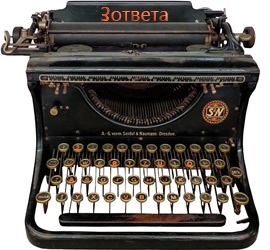Автор Ёергей Ляшенко задал вопрос в разделе Школы
Помогите. Нужно составить предложение о каждой планете солнечной системы (на английском) и получил лучший ответ
Ответ от Konkord Luk[гуру]
Mercury
Mercury (0.4 AU from the Sun) is the closest planet to the Sun and the smallest planet in the Solar System (0.055 Earth masses). Mercury has no natural satellites; besides impact craters, its only known geological features are lobed ridges or rupes that were probably produced by a period of contraction early in its history.[68] Mercury's very tenuous atmosphere consists of atoms blasted off its surface by the solar wind.[69] Its relatively large iron core and thin mantle have not yet been adequately explained. Hypotheses include that its outer layers were stripped off by a giant impact; or, that it was prevented from fully accreting by the young Sun's energy.[70][71]
Venus
Venus (0.7 AU from the Sun) is close in size to Earth (0.815 Earth masses) and, like Earth, has a thick silicate mantle around an iron core, a substantial atmosphere, and evidence of internal geological activity. It is much drier than Earth, and its atmosphere is ninety times as dense. Venus has no natural satellites. It is the hottest planet, with surface temperatures over 400 °C (752°F), most likely due to the amount of greenhouse gases in the atmosphere.[72] No definitive evidence of current geological activity has been detected on Venus, but it has no magnetic field that would prevent depletion of its substantial atmosphere, which suggests that its atmosphere is frequently replenished by volcanic eruptions.[73]
Earth
Earth (1 AU from the Sun) is the largest and densest of the inner planets, the only one known to have current geological activity, and the only place where life is known to exist.[74] Its liquid hydrosphere is unique among the terrestrial planets, and it is the only planet where plate tectonics has been observed. Earth's atmosphere is radically different from those of the other planets, having been altered by the presence of life to contain 21% free oxygen.[75] It has one natural satellite, the Moon, the only large satellite of a terrestrial planet in the Solar System.
Mars
Mars (1.5 AU from the Sun) is smaller than Earth and Venus (0.107 Earth masses). It possesses an atmosphere of mostly carbon dioxide with a surface pressure of 6.1 millibars (roughly 0.6% of that of Earth).[76] Its surface, peppered with vast volcanoes, such as Olympus Mons, and rift valleys, such as Valles Marineris, shows geological activity that may have persisted until as recently as 2 million years ago.[77] Its red colour comes from iron oxide (rust) in its soil.[78] Mars has two tiny natural satellites (Deimos and Phobos) thought to be captured asteroids.[79]
Jupiter
Jupiter (5.2 AU), at 318 Earth masses, is 2.5 times the mass of all the other planets put together. It is composed largely of hydrogen and helium. Jupiter's strong internal heat creates semi-permanent features in its atmosphere, such as cloud bands and the Great Red Spot. Jupiter has 67 known satellites. The four largest, Ganymede, Callisto, Io, and Europa, show similarities to the terrestrial planets, such as volcanism and internal heating.[90] Ganymede, the largest satellite in the Solar System, is larger than Mercury.
Saturn
Saturn (9.5 AU), distinguished by its extensive ring system, has several similarities to Jupiter, such as its atmospheric composition and magnetosphere. Although Saturn has 60% of Jupiter's volume, it is less than a third as massive, at 95 Earth masses, making it the least dense planet in the Solar System.[91] The rings of Saturn are made up of small ice and rock particles. Saturn has 62 confirmed satellites; two of which, Titan and Enceladus, show signs of geological activity, though they are largely made of ice.[92] Titan, the second-largest moon in the Solar System, is larger than Mercury and the only satellite in the Solar System with a substantial atmosphere.
Thanks you so very mach!!:))
Какая самая маленькая планета солнечной системы?
#yaimg23010#
Планеты: Английская Википедия
И видим что из небесных тел считающихся
подробнее...
В честь кого назвали планеты солнечной системы и ПОЧЕМУ?
Самые древние свидетельства наблюдения Меркурия можно найти ещё в шумерских клинописных текстах,
подробнее...
Солнечная система и коричневый карлик
Уже и по телевизору показали? ! Очередной бред вроде Нибиру. Я его увидел еще пару дней назад и
подробнее...
Кто ответит, когда и кто открыл планеты Солнечной системы?
Первые семь планет Солнечной системы от Меркурия до Сатурна были известны с глубокой древности еще
подробнее...
У какой планеты Солнечной системы больше всего естественных спутников?
У Юпитера.. .
У Меркурия нет спутников.
У Венеры тоже нет спутников
Спутники этой планеты Солнечной системы получили названия в честь персонажей У. Шекспира и А. Попа
Уран
Спутники Урана
Всего у Урана известно 17 спутников. Эта спутниковая система
подробнее...
Подскажите, в честь каких богов названы планеты солнечной системы
#yaimg35191#
Источник:
подробнее...
Почему Земля не падает на Солнце??
ПОЧЕМУ ЗЕМЛЯ НЕ ПАДАЕТ НА СОЛНЦЕ?
Действительно, странно: Солнце огромными силами тяготения
подробнее...
каким образом атмосфера удерживается на планете?
Увы.. .
Если ракета набрала вторую космическую скорость, то она движется так быстро, что
подробнее...
Нужно сочинение на тему Космос и вселенная обьем 4-5 страниц формата А4
Слово «космос» в переводе с греческого языка означает «мир» , «Вселенная» . От греков слово
подробнее...
Назовите планеты (кроме Земли) , входящие в Солнечную систему и кем были Боги, в честь которых их назвали?
Плутон - карликовая планета Солнечной системы. Мифологический герой Плутон — бог подземного царства
подробнее...
